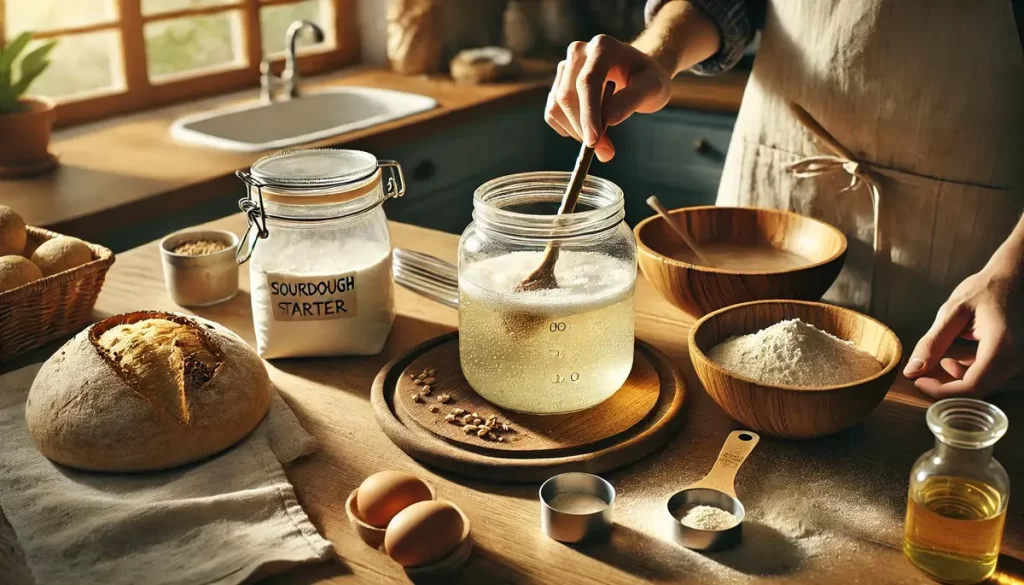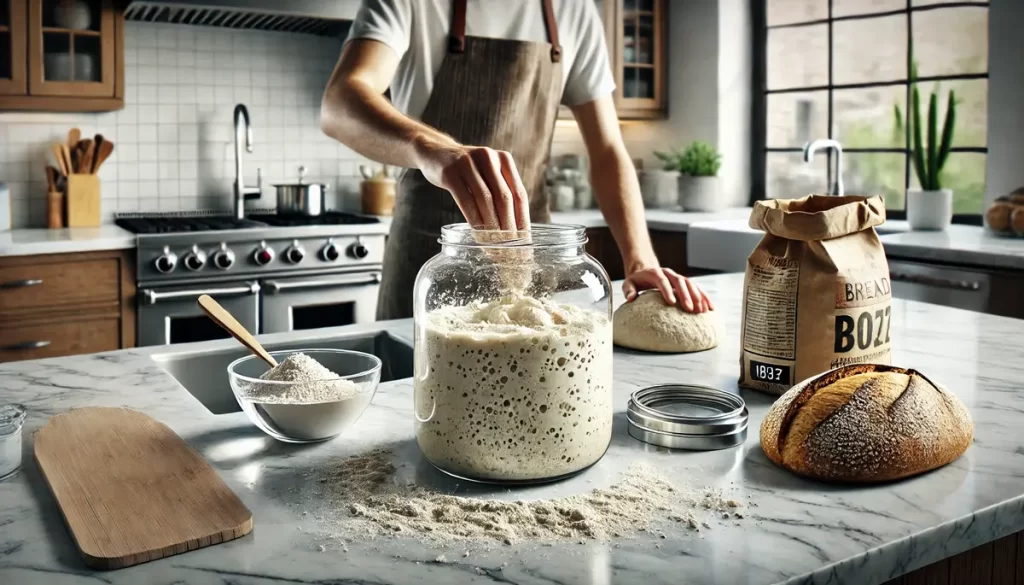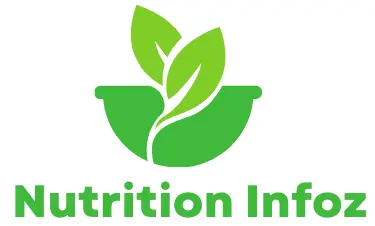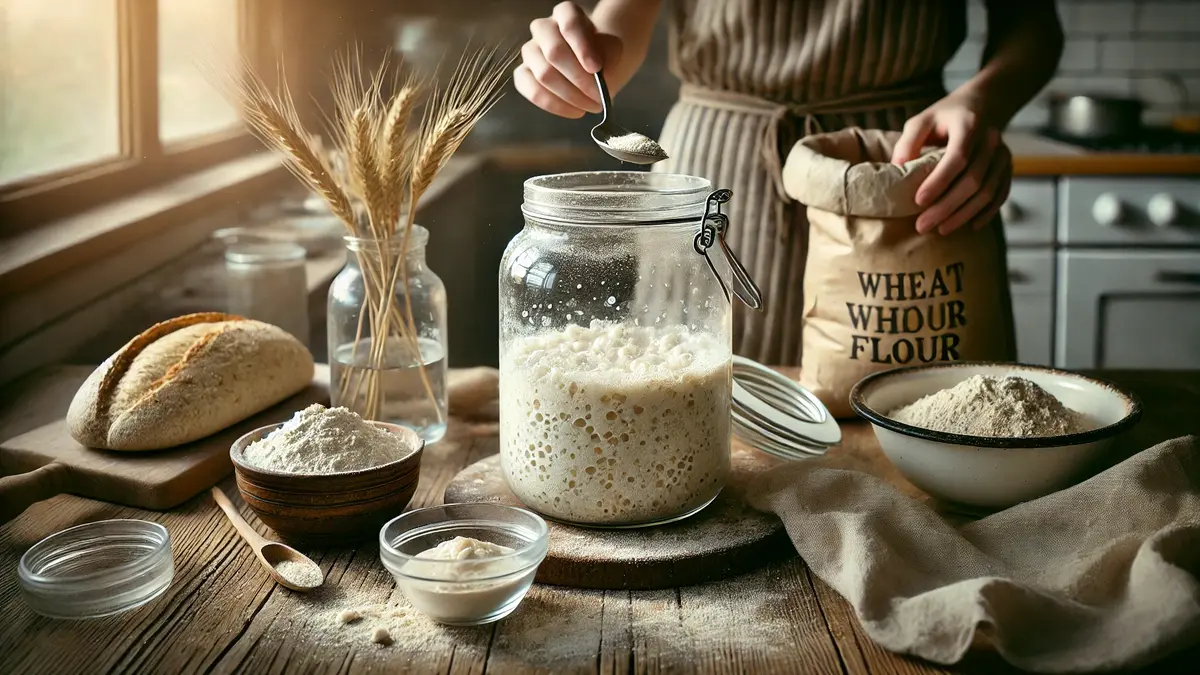Learning how to make a sourdough starter starts you on your way to taste the purest of homemade sourdough breads. We’re going to walk you through everything you need to be starting off, from creating your first starter to maintaining it. So, whether you’re a beginner or trying to hone your sourdough skills, this article will walk you through an easy sourdough starter recipe and, even better, expert tips. In this post, I cover how to make a sourdough starter from scratch, why they’re an integral part of sourdough baking, and how it can change your homemade bread forever.
What is a Sourdough Starter?
A sourdough starter is a mixture of flour and water that’s fermented and is a mixture of wild yeast from the environment. This sourdough-based baking involves a mixture of flour and water as its base, essentially a natural leavening agent for bread. A sourdough starter doesn’t need feeding as often as commercial yeast, but it does need watching so it doesn’t get “too strong.” As it ferments, the bacteria and yeast work hard, and the starter feeds on flour. If you’ve never worked with sourdough starters before, then figuring out how to fed your sourdough starter so that it is healthy and functioning is the most important thing you can do in order to end up with amazing sourdough bread.
Sourdough Starter Recipe for Beginners
Sourdough starter recipe is an easy recipe to follow for beginners, but starting your sourdough journey can feel daunting. Start off with 50% flour and 50% water. For best results use unbleached all purpose flour or a combination of whole wheat flour with white bread flour. Put a glass jar, combine ½ cup flour with ½ cup of room-temperature water in it. Let sit loosely at room temperature and cover. Working off the well-established suspensions of our wild yeast and beneficial bacteria, you’ll see the formation of bubbles over the next few days. Eventually, this process will result in a very strong sourdough starter from scratch.

Choosing the Right Flour for Your Starter
The type of flour you use in your starter will determine your sourdough bread’s flavor and strength. Whole wheat flour and rye flour have more wild yeast than all-purpose flour, which means they’re a better choice for a more active starter. Lighter sourdough goes for white bread flour or mixtures using only all-purpose flour and diluted with water. Buy whichever flour you please, but use fresh, high-quality flour to make your starter the best chance of success you can get.
How to Make a Sourdough Starter from Scratch
If you want to make a sourdough starter from scratch, combine 50g of flour, and 50g of room temperature water into your clean jar. Rest it for 24 hours at room temperature and, throw out half of this mixture, and then add another 50 grams of fresh flour and water and feed it. Day 1 – 5 to 7 days repeat this process daily. On day five, your starter should be doubled by now, and you will see plenty of bubbles. Your bacteria and yeast should be thriving, which should mean your starter should smell pleasant sour. Your starter is now an active, ready-to-bake one.
Maintaining Your Sourdough Starter
A sourdough starter is simple, but it is also crucial, to maintaining a sourdough starter. You need to feed it regularly to keep your starter active. Generally speaking, you feed your starter once a day and provide it with a fresh mix of flour and water. You can keep tabs on your starter and how much it’s growing by using a rubber band to mark the growth around the jar, doubling in size between feedings. If you aren’t baking daily, put your starter in the fridge, and then you will need to feed it once a week. A good starter should be bubbly act,ive, and ready to make bread!
What to Do with Sourdough Discard
You’ll need to discard a portion of your starter for each feed. It may seem like wasteful discard but it can be very creatively used. You can use what we call ‘sourdough discard’ on pancakes, waffles, or even crackers. You’re free to store the discard in another same type container and keep it in your fridge if you’re not ready to use it right away. Sourdough discard recipes are very versatile for a lot of beginner sourdough bakers. It’s a waste reduction win and an opportunity to try new tastes.
Learn More: The Ultimate Guide to Soft Sourdough Sandwich Bread: A Perfect Homemade Loaf
How to Know When Your Starter is Ready
After several days of prep, you’ll want to do a float test — *test* that your starter is ready to use. To achieve this, simply drop a little starter into some water. Only if your sourdough starter floats is it ready to bake. The starter should double, if not triple, size in the first couple of hours.; The starter should be bubbly, smell a bit incredibly sour, and should require several stirring. But if your starter isn’t going, just give it another 24 hours to do so. Watch the bubbles, for they mean that the batter has gone so the bacteria and yeast are acting up enough for baking.

Creative Ways to Use Your Sourdough Starter
So, your sourdough starter isn’t just for baking sourdough bread. So, using your starter, you can make sweet baked goods, pizza dough, sourdough pancakes, or any recipe. Reading different recipes will help you if you’re attempting to make your first sourdough starter. There are tons of savory bread recipes and, even better, creative discard recipes. Also, remember that experimenting with your sourdough starter doesn’t hurt because each batch brings its flavor.
Key Points to Remember:
- Starter Maintenance: To ensure your starter is being fed daily, feed it with fresh flour and water.
- Sourdough Discard: Making these recipes helps minimize the sourdough discard at hand.
- Types of Flour: All whole wheat, rye or all purpose flour will work, but they affect your starter differently.
- Float Test: Test your starter to see if it’s ready to be baked by performing a float test.
- Starter Doubles in Size: Bubbly, active starter should double in a few hours after feeding.
- Patience is Key: Sourdough baking is a slow process, but the pay off is 100 percent.
- Experiment with Recipes: If you are not having sourdough bread don’t limit yourself to it, try sourdough pancakes, sourdough pizza and more!
- If you follow these tips, you are on your way to making your own sourdough starter, and making sourdough.
FAQs
What is a sourdough starter?
Also known as a sourdough starter, this is a mixture of flour and water which contain wild yeast and beneficial Bacteria that we find in the environment. That fermentation process naturally produces a bacteria that can be used to make sourdough bread and other baked goods. There is a unique taste and texture that the sourdough starter brings to your baked goods unlike commercial yeast.
What can I use to make a sourdough starter from scratch?
To make your own sourdough starter you mix equal parts flour and water in a clean jar. One primary ratio is one cup of flour divided by one cup of water. Mix gently with a spoon until it is no longer crumbly, cover with a cloth, and leave at room temperature. For the next few days, you’ll have to feed the starter fresh flour and water each day to encourage the growth of wild yeast and bacteria.
Should I use whole flour, or should it be refined?
You can use all-purpose, wheat, or whole wheat flour in a sourdough starter. Nutrient pictures vary between each type of flour and each can affect the taste and activity of you starter. If you’re new to baking, all-purpose flour would be a good option, but whole wheat flour tends to capture wild yeast better.




Leave feedback about this